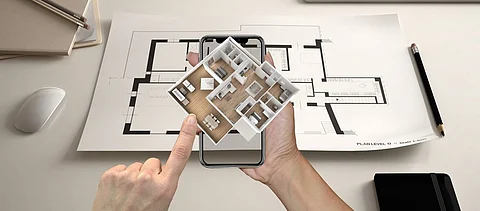
- NEWS
- the EDIT
- COMMENTARY
- BUSINESS
- LIFE
- SHOW
- ACTION
- GLOBAL GOALS
- SNAPS
- DYARYO TIRADA
- MORE

The rapid advancement of technology has not left any industry untouched. Real estate is no exception.
Adapting innovation and technology is not just a luxury but a strategic necessity. It’s crucial for investors, developers and even homeowners to adjust to these changes to stay ahead.
PropTech, a portmanteau of “property” and “technology,” is a trend currently redefining the sector. The National Association of Realtors define PropTech as “the complete landscape of established and emerging digital tools used by real estate professionals to complete all aspects of the property transaction cycle — from researching to listing to buying and selling.”
In the Philippines, PropTech is transforming the market through smart home systems, virtual reality property tours and enhanced property management. These technologies ease transactions, improve customer service and minimize human errors — further signaling a paradigm shift in the industry.
“We’re not just looking at immediate benefits. Our focus is on the long-term impact, setting new standards, and inspiring a shift across the industry. Through strategic PropTech integration, we aim to create spaces that not only serve our current tenants but also pave the way for future generations,” SM Prime Holdings vice president and SM Offices head Alexis Ortiga said in a statement.
Virtual, augmented reality
Popular technology for real estate includes virtual tours.
Majority of property developers are now utilizing AI-driven websites to aid buyers searching for investments. A property’s layout, size and aesthetics can now be viewed by potential buyers from the comfort of their homes. There’s also the rise of AI-powered chatbots and virtual assistants that provide 24/7 customer service.
Interactive homes
While smart homes are defined by an assemblage of high-tech appliances, there’s also the advent of interactive homes.
With the help of the Internet of Things (IoT), the next generation of applications are born. Simple gadgets or appliances are embedded with sensors, processing ability, software and other technologies that, by extension, can be connected whenever and wherever you are.
Even as far back as 2010, global think-tank FutureScope reported that architects use sound-mapping software developed at Cardiff University in Wales that could see the noisy hot spots where conversations in a room might become unintelligible.
Energy recovery
SM Offices, for instance, has embraced cutting-edge technologies like the Energy Recovery Ventilator.
ERV promotes energy efficiency by transforming stale exhaust air into fresh outside air. This enhances air quality, moisture regulation and provides cool and clean air to the tenants.
Other technologies such as the Building Management System and Air Conditioning and Ventilation System are used to optimize desired comfort cooling requirements at the least energy and water consumption for both common areas and applicable leased spaces.
SM Offices has also integrated in its spaces the National Building Code-compliant Seismic Accelerograph earthquake recording instruments and seismic detection devices. During seismic events, these technologies trigger alarms and provide relevant information to ensure that emergency protocols are implemented.
There’s so much more technological advancements out there. It’s only a matter of time that they are all integrated while the country aims for operation excellence.
